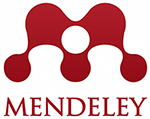Posición Hioidea en radiografías cefálicas laterales de pacientes entre 8 y 18 años.
DOI:
https://doi.org/10.26871/killcanasalud.v5i3.843Resumen
Objetivo: El objetivo de este estudio, fue evaluar la posición del hueso hioides en los diferentes patrones esqueletales de Clase I, II y III mediante el trazado cefalométrico del triángulo hioideo, estableciendo diferencias entre cada clase.
Materiales y métodos: La muestra consistió en 161 radiografías cefálicas laterales digitales correspondientes a pacientes de ambos sexos (75 hombres y 86 mujeres), cuyas edades fluctuaron entre los 9 y 18 años las mismas que fueron divididas en tres subgrupos (Clase I, clase II y clase III) de acuerdo a los ángulos ANB y APDI. Se determinó la posición anteroposterior, vertical y angular del hueso hioides mediante el trazado cefalométrico del triángulo hioideo siendo el mentón, la tercera vértebra cervical y el hueso hioides las estructuras anatómicas utilizadas para el trazado del mismo. Se obtuvieron medidas estándar para cada clase esqueletal.
Resultados: Se observaron diferencias estadísticamente significativas en la medida de H-Rgn entre clase I y II y entre clase II y III (p<0,005). El valor del ángulo del plano hioidal presentó diferencias estadísticamente significativas entre clase I y III y entre clase II y III (p<0,005). Se evidenciaron diferencias estadísticamente significativas entre hombres y mujeres con clase I esqueletal en la medida H-Rgn. La posición angular del hueso hioides mostró diferencias estadísticamente significativas entre los distintos grupos etarios en las tres clases esqueletales.
Conclusiones: La posición del hueso hioides varía en los diferentes patrones esqueletales. Sin embargo, su posición en relación a la columna cervical presenta menos variabilidad que su relación con la mandíbula. Es importante considerar el dimorfismo sexual al evaluar la posición hioidea, así como cambios en su posición en individuos en etapa de crecimiento.
Descargas
Citas
Amayeri M, Saleh F, Saleh M. The position of hyoid bone in different facial patterns : a lateral cephalometric study. Eur Sci J. 2014;10(15):19–34.
Krogh-Poulsen WG, Uribe CL. Sistema estomatognático. Divulg Cult Odontol. 1971;(139):3-6 passim.
Aldana, p. A.; bçez, r. J.; Sandoval, c. C.; Vergara, n. C.; Cauvi, l. D. & Fernández de la Reguera A. Asociación entre Maloclusiones y Posición de la Cabeza y Cuello. Int J Odontostomat,. 2011;5:119–25.
Brodie AG. Anatomy and physiology of head and neck musculature. Am J Orthod. 1950;36(11):831–44.
Bibby RE, Preston CB. The hyoid triangle. Am J Orthod. 1981;80(1):92–7.
Yamaoka M, Furusawa K, Uematsu T, Okafuji N, Kayamoto D, Kurihara S. Relationship of the hyoid bone and posterior surface of the tongue in prognathism and micrognathia. J Oral Rehabil. 2003;30(9):914–20.
Ucar FI, Ekizer A, Uysal T. Comparison of craniofacial morphology, head posture and hyoid bone position with different breathing patterns. Saudi Dent J [Internet]. 2012;24(3–4):135–41. Available from: http://dx.doi.org/10.1016/j.sdentj.2012.08.001
Opdebeeck H, Bell WH, Eisenfeld J, Mishelevich D. Comparative study between the SFS and LFS rotation as a possible morphogenic mechanism. Am J Orthod. 1978;74(5):509–21.
Adesina BA, Otuyemi OD, Ogunbanjo BO, Otuyemi DO. Cephalometric Assessment of Hyoid Bone Position in Nigerian Patients With Bimaxillary Incisor Proclination. J West African Coll Surg [Internet]. 2016;6(4):117–35. Available from: http://www.ncbi.nlm.nih.gov/pubmed/29181368%0Ahttp://www.pubmedcentral.nih.gov/articlerender.fcgi?artid=PMC5667720
Abu Allhaija ES, Al-Khateebb SN. Uvulo-glosso-pharyngeal dimensions in different anteroposterior skeletal patterns. Angle Orthod. 2005;75(6):1012–8.
Issa FG, Edwards P, Szeto E, Lauff D, Sullivan C. Genioglossus and breathing responses to airway occlusion: Effect of sleep and route of occlusion. J Appl Physiol. 1988;64(2):543–9.
Birbe J, Serra M. Ortodoncia en cirugía ortognática. 2008 IEEE CSIC Symp GaAs ICs Celebr 30 Years Monterey, Tech Dig 2008. 2008;11:547–57.
Duque Serna FL, Jaramillo Vallejo PM, Escobar Gómez ML, Perilla Martínez Y. Cambios en la vía aérea después de cirugía ortognática bimaxilar en pacientes con maloclusión clase III esquelética. Rev Fac Odontol Univ Antioquia. 2008;20(1):14–30.
Eggensperger N, Smolka W, Iizuka T. Long-term changes of hyoid bone position and pharyngeal airway size following mandibular setback by sagittal split ramus osteotomy. J Cranio-Maxillofacial Surg. 2005;33(2):111–7.
Khanna R, Tikku T, Sharma V. Position and Orientation of Hyoid Bone in Class II Division 1 Subjects: A Cephalometric Study. J Indian Orthod Soc. 2011;45:212–8.
Jose NP, Shetty S, Mogra S, Shetty VS, Rangarajan S, Mary L. Evaluation of hyoid bone position and its correlation with pharyngeal airway space in different types of skeletal malocclusion. Contemp Clin Dent. 2014;5(2):187–9.
Cuozzo GS, Bowman DC. Hyoid positioning during deglutition following forced positioning of the tongue. Am J Orthod. 1975;68(5):564–70.
Kama JD eveciogl. Cephalometric investigation of first cervical vertebrae morphology and hyoid position in young adults with different sagittal skeletal patterns. ScientificWorldJournal. 2014;2014:159784.
Wenzel A, Williams S, Ritzau M. Relationships of changes in craniofacial morphology, head posture, and nasopharyngeal airway size following mandibular osteotomy. Am J Orthod Dentofac Orthop. 1989;96(2):138–43.
Matsumoto MAN, Romano FL, Ferreira JTL, Tanaka S, Morizono EN. Lower incisor extraction: An orthodontic treatment option. Dental Press J Orthod. 2010;15(6):143–61.
Wang Q, Jia P, Anderson NK, Wang L, Lin J. Changes of pharyngeal airway size and hyoid bone position following orthodontic treatment of Class i bimaxillary protrusion. Angle Orthod. 2012;82(1):115–21.
Stepovich ML. A cephalometric positional study of the hyoid bone. Am J Orthod. 1965;51(12):882–900.
Tsai HH. The positional changes of hyoid bone in children. J Clin Pediatr Dent. 2002;27(1):29–34.










